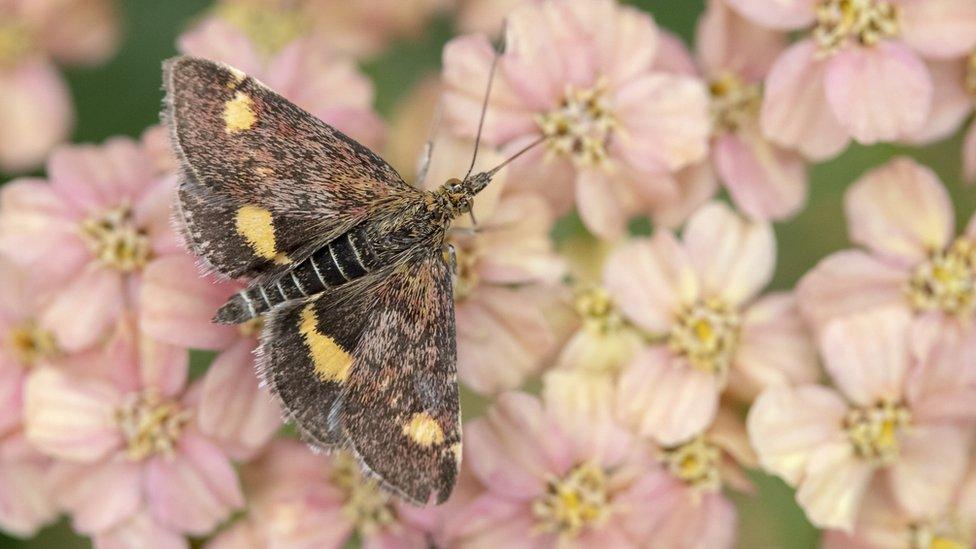Moths are super pollinators too, did you know?
- Published
- comments

Did you know our fluttery friends, the moths, are just as important as bees for plant pollination?
Insects, like bees and butterflies, pollinate plants when they go from flower to flower gathering pollen and the process is vital to help crops and native wild flowers reproduce.
New research has shown moths make up a third of the pollinator visits to plants in towns and cities.
But the number of moths flying about in these places is on the decline, and scientists say they're still under threat.
Scientists from the University of Sheffield have been looking at pollinators in urban areas where there is less plant biodiversity and how this impacts not only the insects, but the plants themselves.
They found that moths play a vital role, pollinating a third of all plants in towns and cities.
But there are around 33% fewer moths floating about now than there were 50 years ago which threatens the plants and also the crops that rely on them.
Dr Emilie Ellis said: "As moths and bees both rely on plants for survival, plant populations also rely on insects for pollination."
Biodiversity is the range of animals, plants and microorganisms in a given area. It is the foundation that supports all life and each member plays an important role.
The study also showed moths carry much more pollen and visit a wider variety of plants than we previously thought.
But in more urbanised areas like our cities, there is often a lack of plant biodiversity which scientists say might mean fewer insects interacting with them because they're less attractive to them.
Dr Ellis continued: "Protecting urban green spaces and ensuring they are developed in such a way that moves beyond bee-only conservation but also supports a diverse array of wildlife, will ensure both bee and moth populations remain resilient and our towns and cities remain healthier, greener places."
- Published8 April 2023
- Published20 February 2023
- Published6 January 2023
